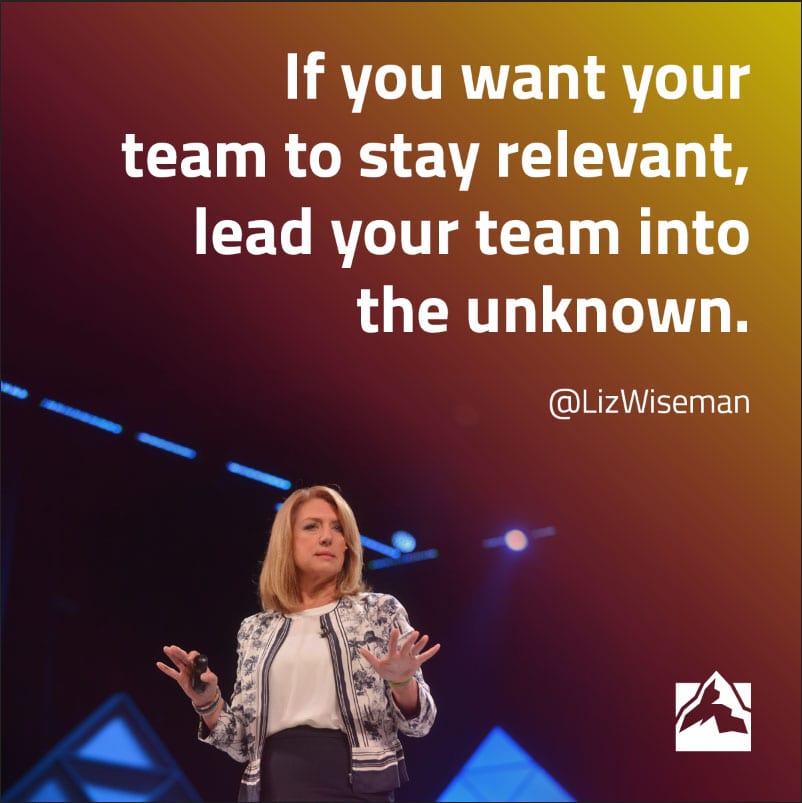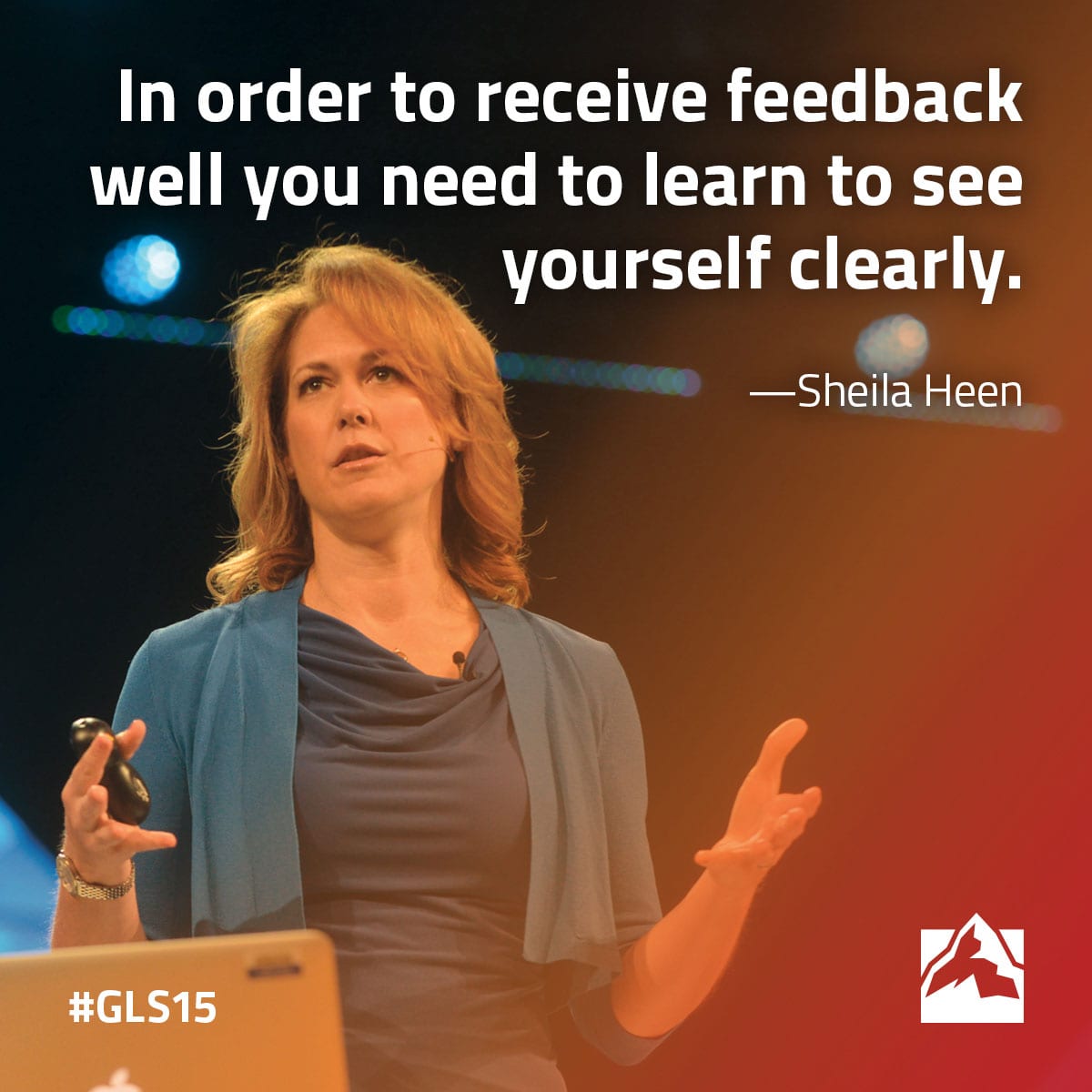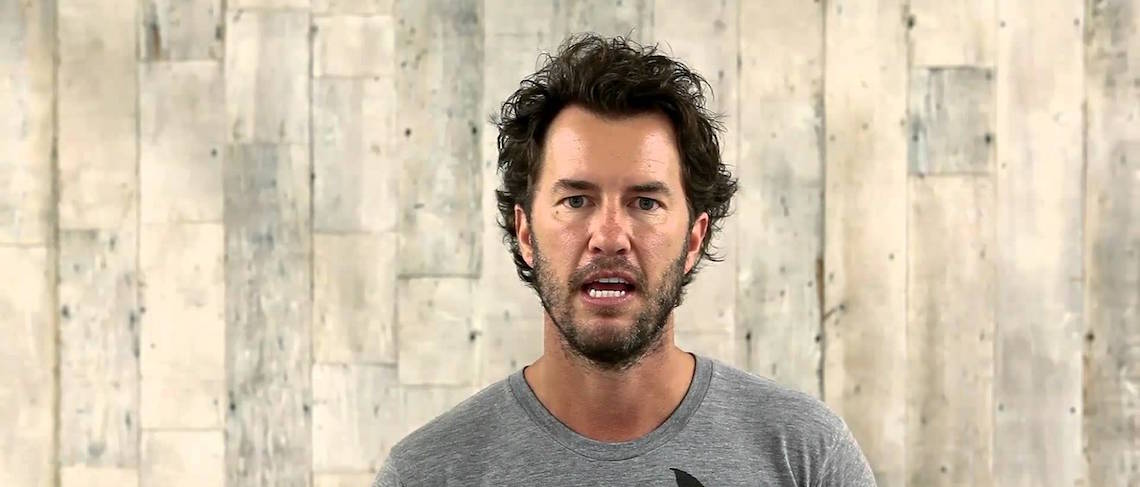
If you want your team to stay relevant, lead your team into the unknown.

If you want your team to stay relevant, lead your team into the unknown.

Do 5 minute favors… find small ways to add great value to others.

The bravest among us will always be the most broken hearted because we had courage to love.

In order to receive feedback well you need to learn to see yourself clearly.

Travis Bradberry, co-author of the insightful book Emotional Intelligence 2.0, will join the faculty of The Global Leadership Summit in 2016. We are excited to be able to do a deep dive into emotional intelligence, which many are calling one of the most essential skills for leaders in the 21st century. This post examines one aspect of this field: relational awareness. This post originally appeared on Bradberry’s LinkedIn Influencer page.
Body language provides an amazing amount of information on what other people are thinking if you know what to look for. And who hasn’t wanted to read people’s minds at some point?
You already pick up on more body language cues than you’re consciously aware of. UCLA research has shown that only 7% of communication is based on the actual words we say. As for the rest, 38% comes from tone of voice and the remaining 55% comes from body language. Learning how to become aware of and to interpret that 55% can give you a leg up with other people.
When you’re working hard and doing all you can to achieve your goals, anything that can give you an edge is powerful and will streamline your path to success.
TalentSmart has tested more than a million people and found that the upper echelons of top performance are filled with people who are high in emotional intelligence (90% of top performers, to be exact). These people know the power that unspoken signals have in communication, and they monitor body language accordingly.
Next time you’re in a meeting (or even on a date or playing with your kids), watch for these cues:
Crossed arms and legs signal resistance to your ideas. Crossed arms and legs are physical barriers that suggest the other person is not open to what you’re saying. Even if they’re smiling and engaged in a pleasant conversation, their body language tells the story. Gerard I. Nierenberg and Henry H. Calero videotaped more than 2,000 negotiations for a book they wrote on reading body language, and not a single one ended in an agreement when one of the parties had their legs crossed while negotiating. Psychologically, crossed legs or arms signal that a person is mentally, emotionally, and physically blocked off from what’s in front of them. It’s not intentional, which is why it’s so revealing.
Real smiles crinkle the eyes. When it comes to smiling, the mouth can lie but the eyes can’t. Genuine smiles reach the eyes, crinkling the skin to create crow’s feet around them. People often smile to hide what they’re really thinking and feeling, so the next time you want to know if someone’s smile is genuine, look for crinkles at the corners of their eyes. If they aren’t there, that smile is hiding something.
Copying your body language is a good thing. Have you ever been in a meeting with someone and noticed that every time you cross or uncross your legs, they do the same? Or perhaps they lean their head the same way as yours when you’re talking? That’s actually a good sign. Mirroring body language is something we do unconsciously when we feel a bond with the other person. It’s a sign that the conversation is going well and that the other party is receptive to your message. This knowledge can be especially useful when you’re negotiating, because it shows you what the other person is really thinking about the deal.
Posture tells the story. Have you ever seen a person walk into a room, and immediately, you have known that they were the one in charge? That effect is largely about body language, and often includes an erect posture, gestures made with the palms facing down, and open and expansive gestures in general. The brain is hardwired to equate power with the amount of space people take up. Standing up straight with your shoulders back is a power position; it appears to maximize the amount of space you fill. Slouching, on the other hand, is the result of collapsing your form; it appears to take up less space and projects less power. Maintaining good posture commands respect and promotes engagement, whether you’re a leader or not.
Eyes that lie. Most of us probably grew up hearing, “Look me in the eye when you talk to me!” Our parents were operating under the assumption that it’s tough to hold someone’s gaze when you’re lying to them, and they were right to an extent. But that’s such common knowledge that people will often deliberately hold eye contact in an attempt to cover up the fact that they’re lying. The problem is that most of them overcompensate and hold eye contact to the point that it feels uncomfortable. On average, Americans hold eye contact for seven to ten seconds, longer when we’re listening than when we’re talking. If you’re talking with someone whose stare is making you squirm—especially if they’re very still and unblinking—something is up and they might be lying you.
Raised eyebrows signal discomfort. There are three main emotions that make your eyebrows go up: surprise, worry and fear. Try raising your eyebrows when you’re having a relaxed casual conversation with a friend. It’s hard to do, isn’t it? If somebody who is talking to you raises their eyebrows and the topic isn’t one that would logically cause surprise, worry or fear, there is something else going on.
Exaggerated nodding signals anxiety about approval. When you’re telling someone something and they nod excessively, this means that they are worried about what you think of them or that you doubt their ability to follow your instructions.
A clenched jaw signals stress. A clenched jaw, a tightened neck or a furrowed brow are all signs of stress. Regardless of what the person is saying, these are signs of considerable discomfort. The conversation might be delving into something they’re anxious about, or their mind might be elsewhere and they’re focusing on the thing that’s stressing them out. The key is to watch for that mismatch between what the person says and what their tense body language is telling you.
The bottom line is that even if you can’t read a person’s exact thoughts, you can learn a lot from their body language, and that’s especially true when words and body language don’t match.
If you’d like to learn how to increase your emotional intelligence (EQ), consider taking the online Emotional Intelligence Appraisal® test that’s included with the Emotional Intelligence 2.0 book. Your test results will pinpoint which of the book’s 66 emotional intelligence strategies will increase your EQ the most.
Check out The Global Leadership Summit Website to see other members of the faculty and for additional information on the Summit. Register here to attend the GLS at a premier host site near you. Super Early Bird pricing ends of May 24, 2016.

The focus of Christ’s leadership was not His own success, but the success of His followers.

Blake Mycoskie (GLS 2010) has been making news again. After selling 50% of TOMS, he’s using his windfall of $100 million to invest in like-minded companies.The article below describes the next step in his entrepreneurial movement.
Last year, Blake Mycoskie confronted the one dilemma all entrepreneurs dream of: what to do with a personal windfall.
In Mycoskie’s case, the $200 million (after taxes) arrived after he sold half of his company, the buy-one, give-one shoe retailer TOMS, to Bain Capital. He consulted family and friends, intending to find a philanthropic cause he could embrace and attack, in the manner of other entrepreneurs such as Bill Gates, Marc Benioff and Sergey Brin. But Mycoskie has always been an unusual businessman, a free spirit sprinting down a path of his own invention. His decision: use $100 million of that money to launch Tom’s Social Entrepreneurship Fund, an investment fund to back companies that want to be like TOMS.
Encouraging clones isn’t high on the list of strategies recommended by the world’s finest business minds, especially when, as with TOMS, dozens of companies have already mimicked the pioneering idea that once distinguished your brand. When Mycoskie launched TOMS a decade ago, the one-for-one approach was radical. “No one was talking about business being a force for good,” recalls Mycoskie. “Nobody was talking about social good, or the triple bottom line or B Corps.” But now brands from Warby Parker to the Company Store offer customers the feel-good thrills of one-for-one shopping, while a host of other companies are being founded on similar principles.
Threatening stuff? Not to Mycoskie. “The moment the model is not really a competitive advantage for TOMS is the moment when we’ve won, society-wise,” he says.
So far, privately and through the Toms Social Entrepreneurship Fund, Mycoskie has made 16 investments, ranging from $25,000 to $1 million, in a diverse and ambitious set of companies. Some are tiny, like ArtLifting, a website that sells artwork created by people who are homeless or disabled. He’s also supporting the petition site Change.org and Rubicon Global, a data-driven garbage hauler that has been called “Uber for trash.”
“The diversity is really appealing to my entrepreneur side,” says Mycoskie, who sees his investments as part of a larger “crusade to prove that business can be a force for good.” That effort also involves Mycoskie acting as a consultant and adviser to the companies’ founders, and eventually bringing them together at a convention or conference he’s planning for the fall of 2017.
This vision marks a remarkable turnaround for Mycoskie.
Two years ago, TOMS had stopped growing for the first time since its founding. Critics, from philanthropists to business pundits, questioned Mycoskie’s leadership: Did his one-for-one approach really help people, or was it yet another example of a capitalist’s fly-by philanthropy? (Mycoskie points out that TOMS doesn’t just give away shoes; it funds sight-saving surgeries, helps ensure safe drinking water, and creates jobs in communities including Port-au-Prince, Haiti, home to one of its shoe factories.)
And even if TOMS did help, critics wondered if the company’s revenue doldrums were a sign of the limits of Mycoskie’s model, or of his ability. At a time when TOMS was having more troubles than ever, Mycoskie blithely declared that the company would open a new “one-for-one” business every year.
“I made a lot of the same mistakes founders typically make,” he says. “One example: Trying to drive that growth, I put too many butts in too many seats.”
TOMS started getting weighed down by the kinds of problems Mycoskie associated with traditional corporations: slow decision-making, hierarchy, and infighting. “People would come work for Toms expecting ‘Kumbaya,’ and it would be like Shark Tank,” he says. “It got to the point where I didn’t want to come in myself.”
Finally, Mycoskie realized that to keep the company moving forward, he would need both professional and financial backing. In 2014, he sold 50 percent of TOMS to Bain Capital in a deal that valued the company at $625 million. To many, Bain seemed like a strange partner; after all, it was once headed by Mitt Romney, who was caricatured in the 2012 presidential campaign as the embodiment of corporate greed. But according to Mycoskie, Bain is committed to his social mission; the private equity firm has even put its own money into the investment fund. Just as important, “Bain has helped me really focus,” says Mycoskie. “Where can we win? How can we capitalize on the deep connection we have with our customers?”
His first move was stepping down as CEO and appointing Jim Alling, the former chief operating officer of T-Mobile, to the position last April. (Mycoskie is still heavily involved in marketing and product development.) Instead of launching new one-for-one businesses, TOMS is now beefing up its core product by expanding its range of shoe styles, and advertising to buttress its already strong word of mouth.
The injection of funds has also prompted Mycoskie to reconsider his company’s mission. “We thought that ‘one for one’ was why we do what we do, but we realized that it is just what we do,” he says. “The ‘why’ of our mission is that we care for one another.”
Indeed, now that the old model has been fully appropriated, it’s time for something more expansive: TOMS has launched ads that complement the “One for One” logo with a new one, “For One, Another.” It’s a broader slogan, one that matches Mycoskie’s investment ambitions: “I’m going deep on the idea that social entrepreneurship can be the future of business.”
This article originally appeared in Fast Company. To read the full article and learn more about the companies in which Blake is investing, click here.

 Dan Vander Plaats, director of Advancement for Elim Christian Services, was born with a speech impediment. Growing up, he dealt with people treating him differently because he had a disability. “I always resented the treatment I received,” said Dan. “As a young man I remember crying out to God that He would just remove my speech disability, because I so badly wanted to be normal. While I cared about people with disabilities, I also resented it when people treated me like I was disabled. I felt I should be treated differently, but now realize I had a very wrong attitude, not only because I too live with a disability, but because each person who has a disability is as much a child of God, and an image-bearer, as I am.”
Dan Vander Plaats, director of Advancement for Elim Christian Services, was born with a speech impediment. Growing up, he dealt with people treating him differently because he had a disability. “I always resented the treatment I received,” said Dan. “As a young man I remember crying out to God that He would just remove my speech disability, because I so badly wanted to be normal. While I cared about people with disabilities, I also resented it when people treated me like I was disabled. I felt I should be treated differently, but now realize I had a very wrong attitude, not only because I too live with a disability, but because each person who has a disability is as much a child of God, and an image-bearer, as I am.”
Over time, Dan developed a passion for serving people with disabilities, and has changed his perspective. God has spoken to Dan through the Summit since he started attending in 2009. “The Summit has been an unexpected source of encouragement and challenge,” Dan shares. “It was very early on that the teaching at the Summit helped me more effectively struggle with my questions about how disability intersected with the sovereignty of God.” Dan recalls several talks over the years that have contributed his passion to change how the church views people with disabilities:
“Over three straight years, the Summit efforts had contributed to both my struggles and my encouragement as a leader, or more appropriately, as a servant,” Dan shares. “And in the following years, I have grown increasingly more convicted about the role to which I have been called. The Summit is always challenging because it often articulates thoughts and theories about leadership of which I was previously unaware. And even when the challenging part of the Summit is a speaker who I feel is completely wrong, I still am challenged. I don’t get better as a servant or a teammate, if I am not challenged.”

Diverse teams out-perform smarter, more capable teams.

As leaders, there are times that get really hard. The key thing is to be still and listen to the Father’s voice.
“We welcome and encourage comments on this site. There may be some instances where comments will need to be edited or removed, such as:
If you have any questions on the commenting policy, please let us know at heretoserve@globalleadership.org”
Recent Comments